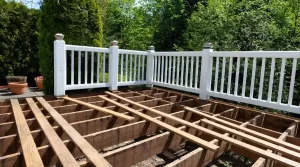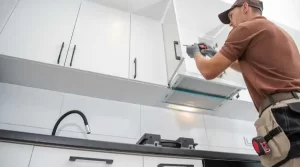In the realm of construction, the quest for sustainability has become a driving force, reshaping the industry’s landscape. The three Rs—Reduce, Reuse, and Recycle—serve as guiding principles, fostering environmentally conscious practices that propel construction towards a greener and more sustainable future. Let’s delve into the depths of these three Rs, uncovering their transformative power and their vital role in shaping the construction industry.
Reduce: Transforming Consumption Patterns
At the forefront of sustainable construction lies the imperative to reduce our environmental footprint. Embracing the principle of “Reduce” involves a comprehensive reevaluation of consumption patterns and resource utilization. By minimizing material wastage and energy consumption, the industry can significantly mitigate its impact on the environment.
One pivotal aspect of reduction involves optimizing building designs for energy efficiency. Employing advanced technologies and innovative materials, architects and engineers can create structures that demand fewer resources for heating, cooling, and lighting. These energy-efficient designs not only lower operational costs but also contribute to a diminished carbon footprint.
Furthermore, construction practices are evolving to reduce the wastage of materials. Modular construction, for instance, enables the assembly of components in controlled factory environments, minimizing on-site wastage. Precise measurements and standardized processes reduce excess materials, enhancing efficiency and sustainability.
Reuse: Breathing New Life into Resources
The principle of “Reuse” introduces a transformative shift towards extending the lifecycle of materials and components. Instead of discarding materials after a single use, construction professionals are embracing the concept of repurposing and refurbishing. This practice not only conserves resources but also nurtures a circular economy.
Buildings are being designed with adaptability in mind, allowing components to be repurposed or reconfigured for different functions. This innovative approach ensures that structures remain functional and relevant even as requirements evolve over time. Adaptive reuse of existing structures is also gaining prominence, preserving architectural heritage while minimizing the environmental impact of new construction.
The integration of reclaimed materials is another hallmark of the “Reuse” principle. Timber, granites, and even structural elements from deconstructed buildings find new life in contemporary projects, infusing them with character and reducing demand for virgin resources. By embracing the reuse of materials, the construction industry aligns with sustainable practices and promotes resource longevity.
Recycle: Transforming Waste into Value
The third pillar of sustainability, “Recycle,” centers around converting construction waste into valuable resources. Traditional practices often resulted in the disposal of substantial amounts of waste in landfills. However, the paradigm is shifting, with the industry recognizing the potential to extract value from these discarded materials.
Recycling encompasses a broad spectrum, from reprocessing concrete and asphalt to producing aggregates for new construction. Waste materials like glass, metals, and plastics are finding their way into new building components, reducing the demand for raw materials and curbing the environmental impact of extraction.
Technological advancements are redefining recycling practices, enabling the recovery of materials from complex waste streams. Innovative sorting and processing technologies are revolutionizing waste management, facilitating the identification and extraction of valuable components. By embracing recycling, the construction industry not only reduces its ecological footprint but also contributes to the creation of a circular economy.
Beyond the Three Rs: The Holistic Approach
While the three Rs—Reduce, Reuse, and Recycle—serve as the cornerstones of sustainable construction, a holistic approach encompasses additional dimensions. Building practices are evolving to incorporate renewable energy sources, such as solar panels and wind turbines, minimizing reliance on fossil fuels. Water conservation strategies are gaining traction, with the integration of efficient plumbing systems and greywater reuse systems.
Furthermore, sustainable construction extends to social dimensions, prioritizing human well-being and safety. Green building certifications, such as LEED and BREEAM, emphasize indoor air quality, occupant comfort, and community engagement. Sustainable construction projects contribute not only to a healthier planet but also to improved quality of life for occupants and surrounding communities.
The Call for a Greener Tomorrow
The three Rs—Reduce, Reuse, and Recycle—represent a transformative journey towards sustainable construction practices. As the construction industry evolves, it wields the power to reshape the environment and safeguard resources for future generations. By integrating these principles into every facet of construction, from design and materials selection to waste management, the industry paves the way for a greener, more sustainable future.
At JPS Cedar Park Construction & Remodeling, we are committed to embracing sustainable construction practices. Our expert team leverages cutting-edge technologies and innovative methodologies to create spaces that epitomize eco-conscious design. By adhering to the principles of Reduce, Reuse, and Recycle, we infuse each project with sustainability, transforming visions into reality while leaving a positive impact on the environment. Join us on the journey to build a greener tomorrow—one construction project at a time.







